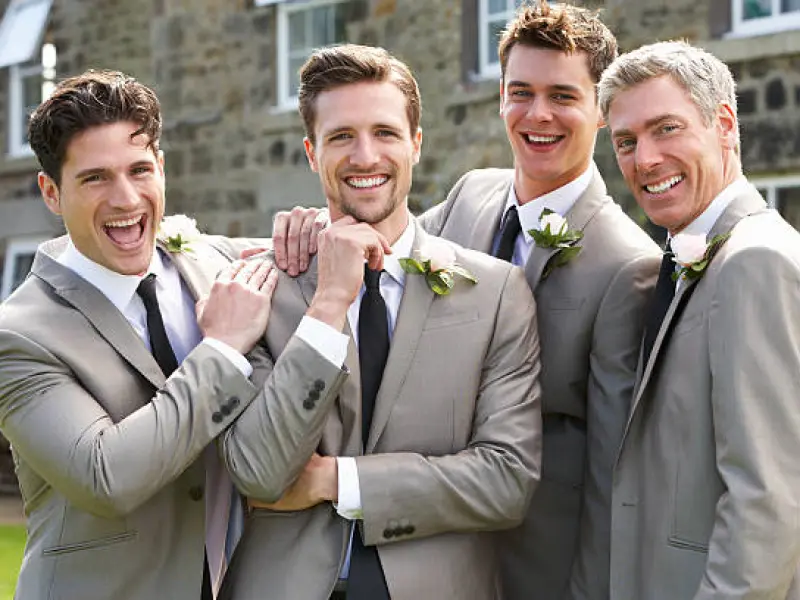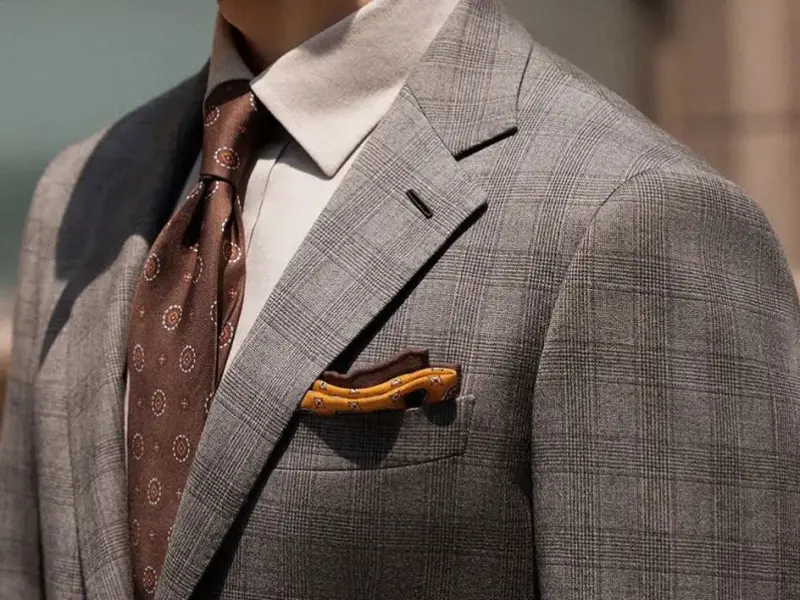
At first, all suits might look the same. But they are not all the same. Different events need different suits. For example, a business suit is different from a wedding suit.
Choosing the right suit for the right event is important. It helps you fit in and shows that you are professional and respectful. It also makes a good impression on others.
In this guide, you will learn about the differences between a wedding suit vs. business suit, covering these comparison points:
Yes, there are noticeable differences between a formal wedding suit and formal suits for business, despite generally being designed similarly. Here are their distinctions from each other outlined below according to categories:
Their names say it all. Wedding suits are, of course, for festive events celebrating a newlywed couple, while business suits are worn in professional settings, such as when meeting with your business partners.
In particular, wedding suits are more free in terms of styles, colors, and details, such as a grey wedding suit or a beach wedding suit. They make the wearer pop from the crowd.
On the other hand, the business suit color combinations are limited. You cannot wear too bright a business suit color when interacting with your clients or stakeholders. You are not at a party. Thus, the color options are restricted to mostly black, gray, and navy.
While the layout of formal wedding suits and business suits are generally similar, their fabrics are varied.
Most wedding suits are made of silk or wool, and this even depends on the season where the wedding is held, such as winter wool and summer silk. Note also that a formal wedding suit is distinct from a tuxedo.
Meanwhile, suits for business may also sport the same materials, but their weaves are thicker, and their stitches feature patterns such as tweed, which are not found in wedding suits. In addition, business suits may also blend natural and synthetic fiber, not seen in wedding suits.
For what are good patterns without good design? The major distinction between wedding suits from business suits in terms of patterns is that the former feature special cuts, lapel styles, and even fabrics with checkered prints, for instance. Other patterns include velvet and satin trims. Remember, with wedding suits, it’s all about standing out.
Conversely, business suits must exude the utmost professionalism, so their designs are just simple. Most of them may either be two-piece or three-piece with notch lapels and really plain colors. Elegance without looking too conspicuous.
You’ve seen the groom and the groomsmen during weddings sport formal wedding suits in varied colors – black, deep red, burgundy, teal, white, light blue, and the like. Men can freely explore when deciding which wedding suit to wear.
However, for business suits, plain and neutral colors work with minimalistic patterns. You won’t find other choices aside from navy, gray, and black.

When it comes to accessorizing, it’s the wedding suits that have a lot of frills. Bowties, pocket squares, cufflinks, and even boutonnieres can be added to the dress. Sometimes, wedding guests will also wear top hats and walking sticks for more sophistication.
Of course, in business settings where you need to look good, but never too much, a simple tie, watch, belt, pair of trousers, and shoes will complete the look. It’s all about professionalism and a more streamlined appearance.
Sometimes, the accessories won’t complete the look yet, but adding more details does. Wedding suits may incorporate more luxurious fabrics, fashion-forward cuts, and unique detailing. The wearer may even choose to go avant-garde. Vests and cravats may be added, too.
Meanwhile, business suits focus on practicality, durability, and conservatism, featuring simple yet timeless cuts.
Before concluding this discussion, here’s a chart to summarize what you learned above:
| Points of Comparison | Wedding Suit | Business Suit |
| Occasion | More celebratory, festive occasions | Professional settings |
| Fabric | Silk or wool | Thicker fabrics for more durability |
| Pattern and structural craftsmanship | Feature special cuts, lapel styles, printed fabrics | Simpler design |
| Color selection | Varied, even pink | Navy, gray, black are the common options |
| Accessories | Bowties, pocket squares, cufflinks, boutonnieres, top hats, etc. | No added frills aside from your tie, watch, belt, trousers, shoes |
| Detailing | Luxurious fabrics, fashion-forward cuts, unique detailing | Simpler yet timeless cuts |
| Customization and versatility | Can be customized more | More versatile than wedding suits |
| Frequency of use | Seldom | Almost everyday |
| Price | High range | Cheaper than the wedding suit |
This should be the last resort. Since suits generally look the same, almost no one can determine you are wearing a business suit at a wedding. However, as a way to respect the groom and bride, as well as their family, you must follow the dress code and invest in a wedding suit.
Business suits are different from formal suits in that formal suits are worn during special occasions instead of worn in the workplace.

Order bespoke, custom-made business suits and wedding suits now from Baoxiniao Garment. Featured on Forbes, the company may have been founded in 1996, but it has over 40 years of factory production of great-looking suits under its wing, which its customers love. Suits that will wow your guests at the wedding and your coworkers in the office. Dress up distinctively and contact us today.